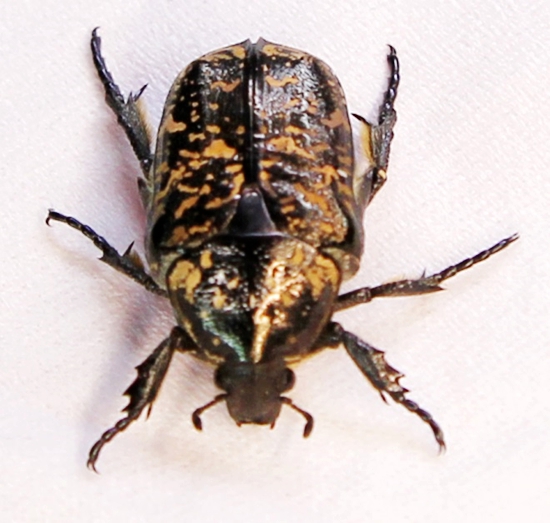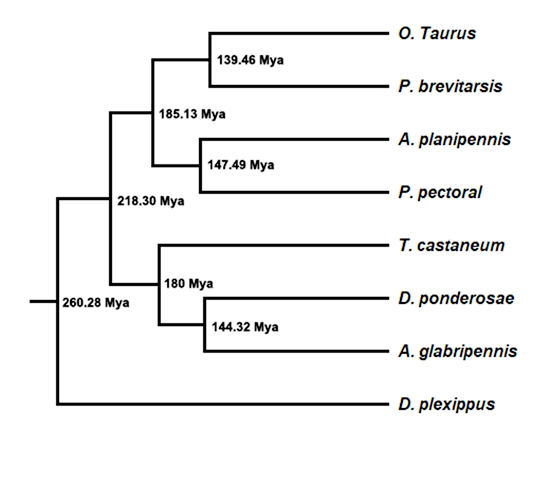Genome assembly of the white-spotted flower chafer (Protaetia brevitarsis) was completed
Recently, the Innovation Team for Development and Application of Bio-pesticides to Insect Pests of IPP-CAAS reported the genomic characteristics of the white-spotted flower chafer (Protaetia brevitarsis) for the first time. This study not only provided insights into the biology of the species, but also provided a wealth of information to researchers interested in the evolution, control, and utilization of P. brevitarsis. These results have been published online in the high-impact open-access journal Gigascience.

P. brevitarsis is an important insect species of Coleoptera Scarabaeidae that is distributed throughout China and the neighboring countries. It appears one generation per year in the natural environment. P. brevitarsis larvae live in the topsoil and feed on waste, such as soil humus, decaying plant residues, and even animal dung. They are important waste decomposers and not harmful to plants. This team previously found that the P. brevitarsis could convert waste quickly and efficiently. The humic acid content in the frass of P. brevitarsis larvae feeding maize straw was 24.37%, which was much higher than other transformation technologies. However, the P. brevitarsis adults are phytophagous, causing severe damages to maize, sunflower and other crops, and flowers and fruits of grapes, pears and other fruit trees. Therefore, P. brevitarsis adults are important agricultural pests which could cause a significant loss in agricultural production.

The genome assembly results indicated that the total size of haploid genome contigs (HGCs) of P. brevitarsis was 750.74 Mb. In addition, a total size of 393.19 Mb of allele sequences (ASs) was also retained. 34,110 (22,229 in HGCs and 11,881 located in AS) protein coding genes were identified from this genome. The phylogenetic tree indicated that P. brevitarsis was closely related to Onthophagus taurus, and the estimated divergence time was around 140 million years ago (Mya).
Related links:
(1)https://academic.oup.com/gigascience/article/8/4/giz019/5428098
(2)https://linkinghub.elsevier.com/retrieve/pii/S0956-053X(18)30673-1
By Shu Changlong (clshu@ippcaas.cn)
-
 Apr 18, 2024Opening Ceremony of the Training Workshop on Wheat Head Scab Resistance Breeding and Pest Control in Africa Held in CAAS
Apr 18, 2024Opening Ceremony of the Training Workshop on Wheat Head Scab Resistance Breeding and Pest Control in Africa Held in CAAS -
 Apr 03, 2024IPPCAAS Co-organized the Training Workshop on Management and Application of Biopesticides in Nepal
Apr 03, 2024IPPCAAS Co-organized the Training Workshop on Management and Application of Biopesticides in Nepal -
 Mar 28, 2024Delegation from the School of Agriculture and Food Science of University College Dublin, Ireland Visit to IAS, CAAS
Mar 28, 2024Delegation from the School of Agriculture and Food Science of University College Dublin, Ireland Visit to IAS, CAAS -
 Mar 25, 2024Director of World Food Prize Foundation visited GSCAAS
Mar 25, 2024Director of World Food Prize Foundation visited GSCAAS -
 Mar 20, 2024Institute of Crop Sciences (ICS) and Syngenta Group Global Seeds Advance Collaborative Research in the Seed Industry
Mar 20, 2024Institute of Crop Sciences (ICS) and Syngenta Group Global Seeds Advance Collaborative Research in the Seed Industry
